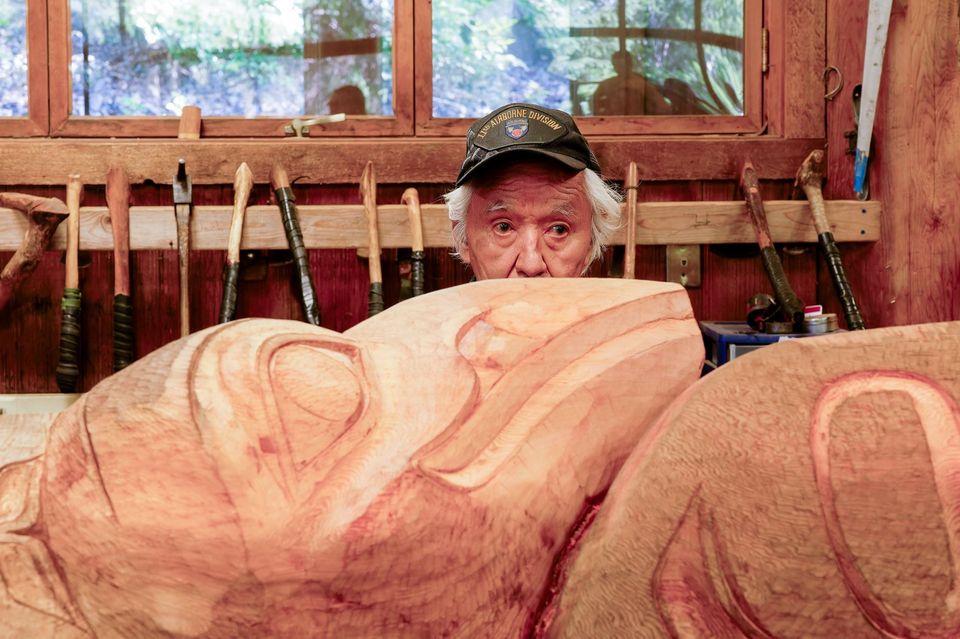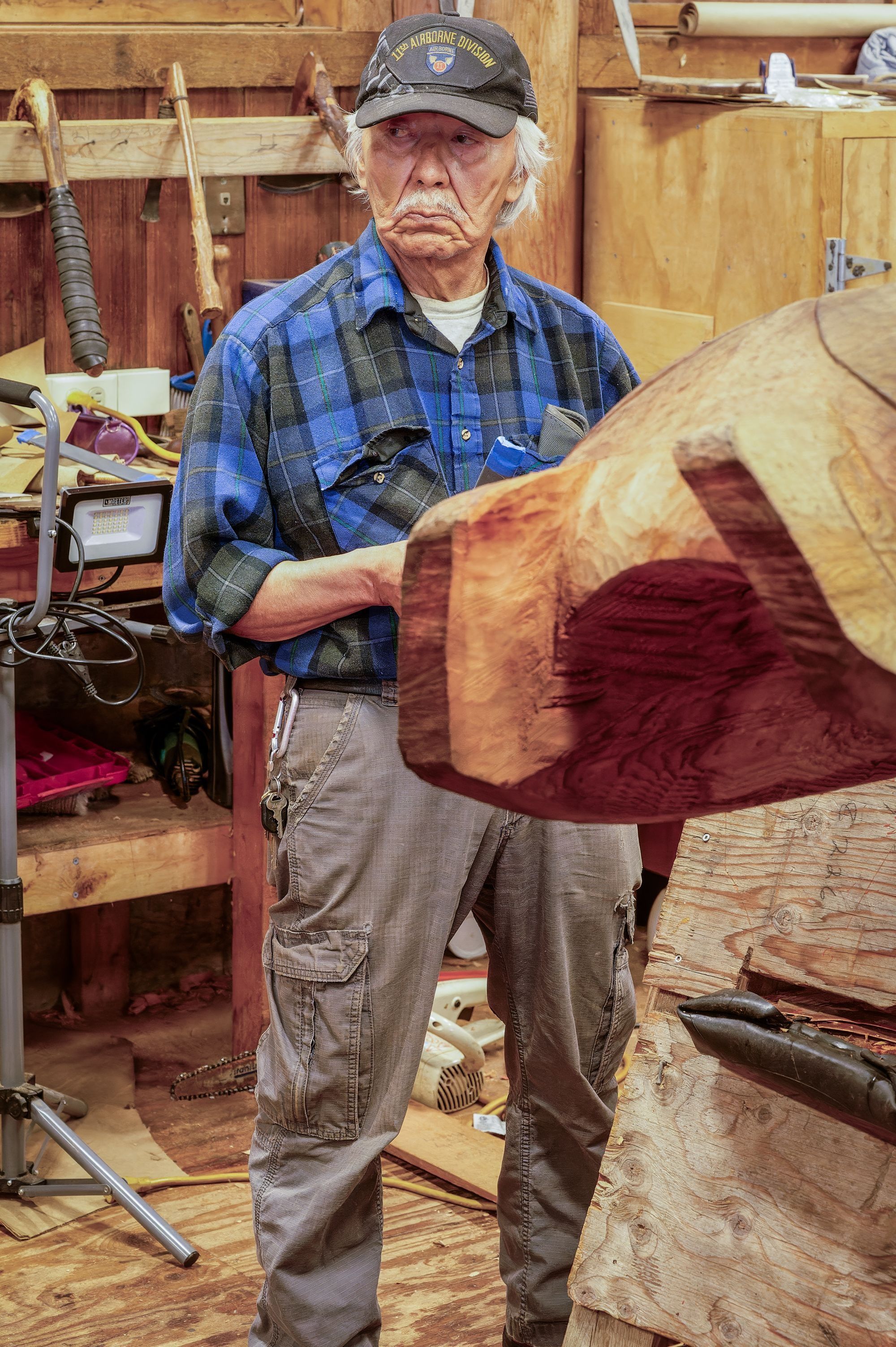Alaska I — The totem carver

This time: indigenous art, totem poles, how to pronounce “Tlingit,” Hippocrates, and more about smiling than usual
The dour gentleman pictured here is Nathan Jackson. He is a member of the Tlingit tribe, despite its spelling pronounced KLIN-git, and he carves totem poles in Saxman, Alaska. He wields his chisels in the Saxman Village Totem Park, just south of Ketchikan. The Tlingits subdivide into clans; Nathan Jackson is of the Sockeye Clan, on the Raven side of the Chilkoot-Tlingit tribe, to be precise.
I have seen photos of him in which he smiles and laughs, but on this day he did not seem to be in the mood. Perhaps, as park staff escorted tourists with cameras in and out of the workshop, he felt too much like a carnival exhibit. Maybe he was simply having a bad morning—a sore back, sore hands, something in the carving not going well. Maybe he figured as an 85-year-old artist, he can wear whatever expression he damn well pleases.

His wife, Dorica, is a weaver who paints his carvings when he is finished. His son, Stephen, who works as Jackson Polys—gotta like that—carves too, and explores applying technology like 3-D printing to the art. You are as likely to encounter him at MIT as you are in Alaska.
Saxman has more than two dozen totems, many of them replicated from originals that were abandoned in other Alaskan villages. Nathan has worked on some of those replicated poles. He chooses to work in Saxman, but he is not obscure. Visit the Smithsonian National Museum of the American Indian and you will see one of his totem poles. He was a 1991 United States Artists Fellow and a 1995 National Endowment for the Arts National Heritage Fellow. The US Postal Service issued a set of American Indian dance stamps the following year; each stamp features a painting of a dancer and the model for the raven dancer was Nathan.
After serving in the US Army, he returned to Alaska in 1959 intent on becoming a fisherman out of Haines. Instead, he ended up in a hospital in Sitka with what doctors feared was tuberculosis but turned out to be pneumonia. During weeks in bed—by one account he was 54 days in the hospital—he amused himself by carving miniature totems, many of which the hospital bought for a display case. Sensing a vocation better than fishing, he went on to art school and has been carving and painting ever since.

In 2001, the Peabody Museum of Harvard returned a totem pole in its collection to the rightful owners, the Teikweidi clan. In generous thanks, the Teikweidi gave the museum a red cedar tree, perfect for carving. Peabody called Nathan Jackson and he created a new pole for the museum. (Scroll down a bit, you will find it.)
In some of my pictures, he looks carved in wood himself. Sturdy, upright, weathered, silent. Like a totem pole, full of stories. Eighty-five and still making art. Ars longa, vita brevis. Yes, but frequently misunderstood. It does translate “art is long, life is short,” but Hippocrates’s meaning was more “learning how to make art takes so long, a lifetime may not be enough.” True dat, but I like to think of one more way of hearing the aphorism: “Practice a long art and, with a bit of luck, you may get a long life.”
Brad Hillwig made a short film about Nathan; you may view it here. Over the next few weeks, I will be displaying more images from a just-completed photo trip to Southeast Alaska. Forests, mountains, glaciers, otters, fjords, mist, that sort of thing. It is good to be back. Thank you for reading.
Member discussion